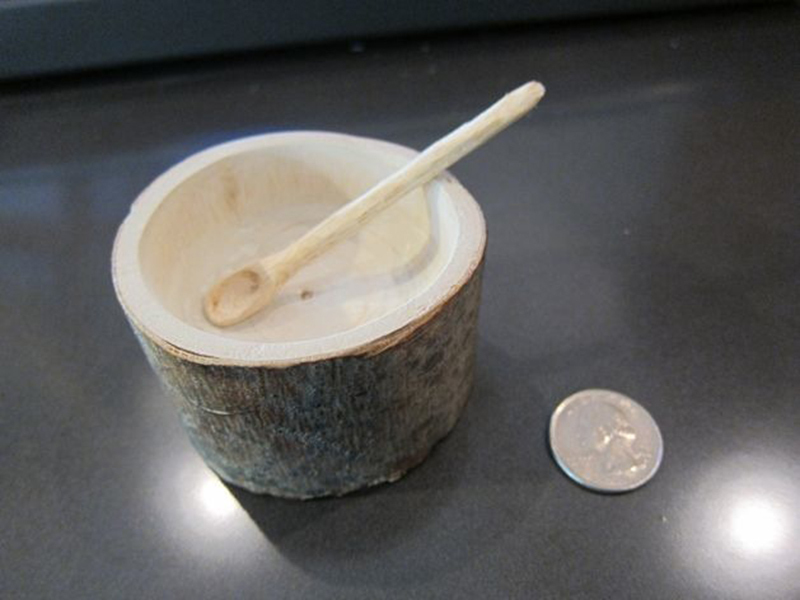I used a sanding drum attachment on my Dremel to clean up the drill holes as much as possible.
The above steps took fewer than 20 minutes to complete. But the next step – sanding – took hours. I started with coarse sandpaper. I cut out a small piece of sandpaper and formed it into a conical shape that fit the pad of my thumb. Then I started sanding away, swapping in a fresh piece of sandpaper every once in a while.
I got a blister after about an hour of sanding. I set the cellar aside for a couple of days. When the blister went away, I started sanding again. The blister returned, like an old friend. I listened to some podcasts during this step, which made the process more pleasant.
Once you get rid of the drill gouges, switch to a finer grit sandpaper. Keep going. When you can no longer stand it, declare victory and set the cellar aside. It’s time to carve the spoon!



















